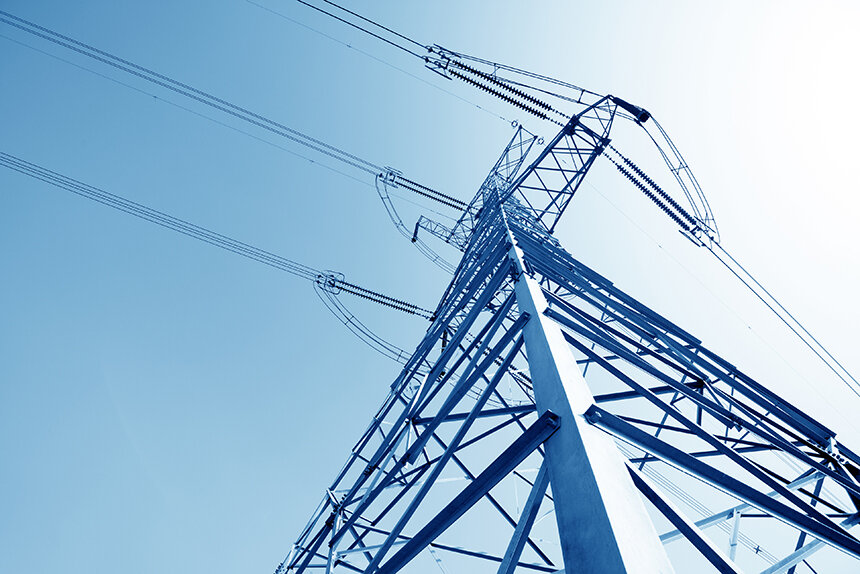New England Governors Fixated on More Natural Gas
April 24, 2015
HARTFORD, Conn. — New England’s governors agreed at a recent energy summit to work collaboratively on energy issues facing the region, principally by supporting the development of more natural gas pipelines.
Here are a few takeaways from the half-day conference held April 23:
If a word cloud were made of what was said publicly, the largest term would be “capacity constraints,” which is a euphemism for insufficient natural gas pipelines in the region. “Energy efficiency” would be one of the larger terms. “Renewable energy” and “carbon footprint” would be smaller. “Health,” “safety,” “toxic emissions” and “fracking” wouldn’t be in the word cloud.
New England generates 50 percent of its electricity from natural gas-fired power plants. Despite the lopsided reliance on a single fuel, the governors want to bring in more natural gas in hopes of reducing winter price increases.
It was mentioned repeatedly at the summit that cold snaps in February 2013, 2014 and 2015 drove up demand for and the price of natural gas so suddenly that coal and oil were needed to meet electricity needs. In 2014, demand was so high that only a few days of reserve fuel remained, according to officials.
Although demand for natural gas was at its highest this past February, supply was greater because of lower oil prices and the liquefied natural gas industry took note of the price spikes during the previous two years and increased its supply at its terminal in Everett, Mass.
Five new natural gas pipeline projects are moving forward in New England.
State leaders say the pipelines will lower gas and electric utility bills, but under the most likely scenario, ratepayers will be paying for the new pipelines through an added charge, called a tariff, on their utility bills.
If the pipelines are built, new natural gas-power plants are expected to be proposed across the region.
A presentation by an energy consultant offered the most candid analysis yet of the five pipeline projects. The buildout of the Algonquin natural gas pipeline that runs from New Jersey to Boston will add 81,000 horsepower to seven compressor stations. The project is the furthest along of all the pipeline projects and was described as “a go” by energy consultant by Richard Levitan. Construction could begin shortly and finish by the end of 2016 or early 2017, he said.
The 1,129-mile Algonquin pipeline runs at full or near-full capacity throughout the year — the most of any pipeline in the region.
The Northeast Energy Direct pipeline proposal received some skepticism from Levitan. The project calls for 417 miles of new pipeline and eight compressor stations across Massachusetts and southern New Hampshire, and requires a lot of “virgin land,” he said.
“This is a big one,” Levitan said. “[It’s] a massive amount of new compressor station build. As well as a large segment of new pipeline capacity.”
He noted the public opposition to the project, calling the permitting process “a tough slog, but doable.”
The project is in a pre-filing stage with the Federal Energy Regulatory Commission (FERC). If approved, the Northeast Energy Direct project could be completed by the end of 2018.
Levitan noted New York, the Midwest and Mid-Atlantic region don’t have the same energy price volatility as New England because they recently expanded their natural gas infrastructure.
Connecticut Gov. Dannel Molloy echoed the common refrain that residents and businesses paid $5.5 billion for energy in the winter of 2013-14 and $2.5 billion this past winter. “That is a crisis. To ratepayers, to citizens, to industry,” he said.
Elin Swanson Katz, a consumer advocate for Connecticut, said New England paid $3 billion more for energy that it should have in 2013-14 and $1 billion more in 2014-15. Katz warned of rolling blackouts and the state’s overreliance on nuclear energy. The Millstone Nuclear Power Station in Waterford, she said, provides half of Connecticut’s electricity.
Vermont gave itself credit for being the only state in New England and the Northeast not to deregulate its electric and natural gas utilities. The state has the lowest energy costs and energy demand in the New England.
Protesters interrupted a panel discussion with a short speech, which Molloy granted before they were escorted from the meeting room at the Hartford Convention Center. The protesters accused the politicians of advocating for the pipelines because of political contributions from the natural-gas industry. They also chided the political leaders for ignoring health and safety concerns created by the pipelines.
“Our region is being assaulted with hazardous pipeline projects, toxic compressor stations and an alarming increase in antiquated energy infrastructure that will keep us bound to dirty energy sources. It’s time for New England leaders to finally turn their backs on polluting fossil fuels of the past and invest now in clean, safe renewable energy of the present,” said Jen Siskind, of Food & Water Watch Connecticut, in a prepared statement from the 38 opposition groups.
Gordon van Welie, president of ISO New England Inc., which manages the flow of electricity across New England, gave his assessment of the region’s energy challenges. Much of the problem was created by the shift to natural gas during the past 15 years, he said. During that time coal use by power plants dropped for 40 percent to 6 percent. Natural-gas pipelines, however, aren’t currently suited to meet the increased demand, hence the term “capacity constraints.”
Natural gas gained preference for its low price and low carbon emissions. As a result, van Welie said, several coal, oil and nuclear plants shut down and more are expected to close as pipelines are built and environmental policies take hold.
Van Welie said energy-efficiency programs across New England will keep energy demand flat for the next decade. Solar power is expected to make a modest but growing contribution to the energy mix as it triples its generation by 2024. Wind and hydropower will only contribute significantly if power lines and other electricity transmission infrastructure are upgraded and expanded, he said.
Paying for the new pipelines and other energy infrastructure is the challenge. Levitan and van Welie said power plants typically don’t have the means to finance them and therefore the pipeline and transmission companies are best suited to fund the projects.
Each New England state is now looking to its public utility commission to assess a fee or tariff that would pay for their share of the pipeline and other energy infrastructure projects.
A 2013 agreement between New England governors to pay for the pipeline projects through a regional tariff was quashed when former Massachusetts Gov. Deval Patrick backed out last spring.
New Hampshire’s Gov. Maggie Hassan was attending a memorial service for a county sheriff and did not attend the recent energy summit. The coalition of governors agreed to speak by phone in June and perhaps meet in person in September.
Categories
Join the Discussion
View CommentsRelated Stories
Your support keeps our reporters on the environmental beat.
Reader support is at the core of our nonprofit news model. Together, we can keep the environment in the headlines.
We use cookies to improve your experience and deliver personalized content. View Cookie Settings



